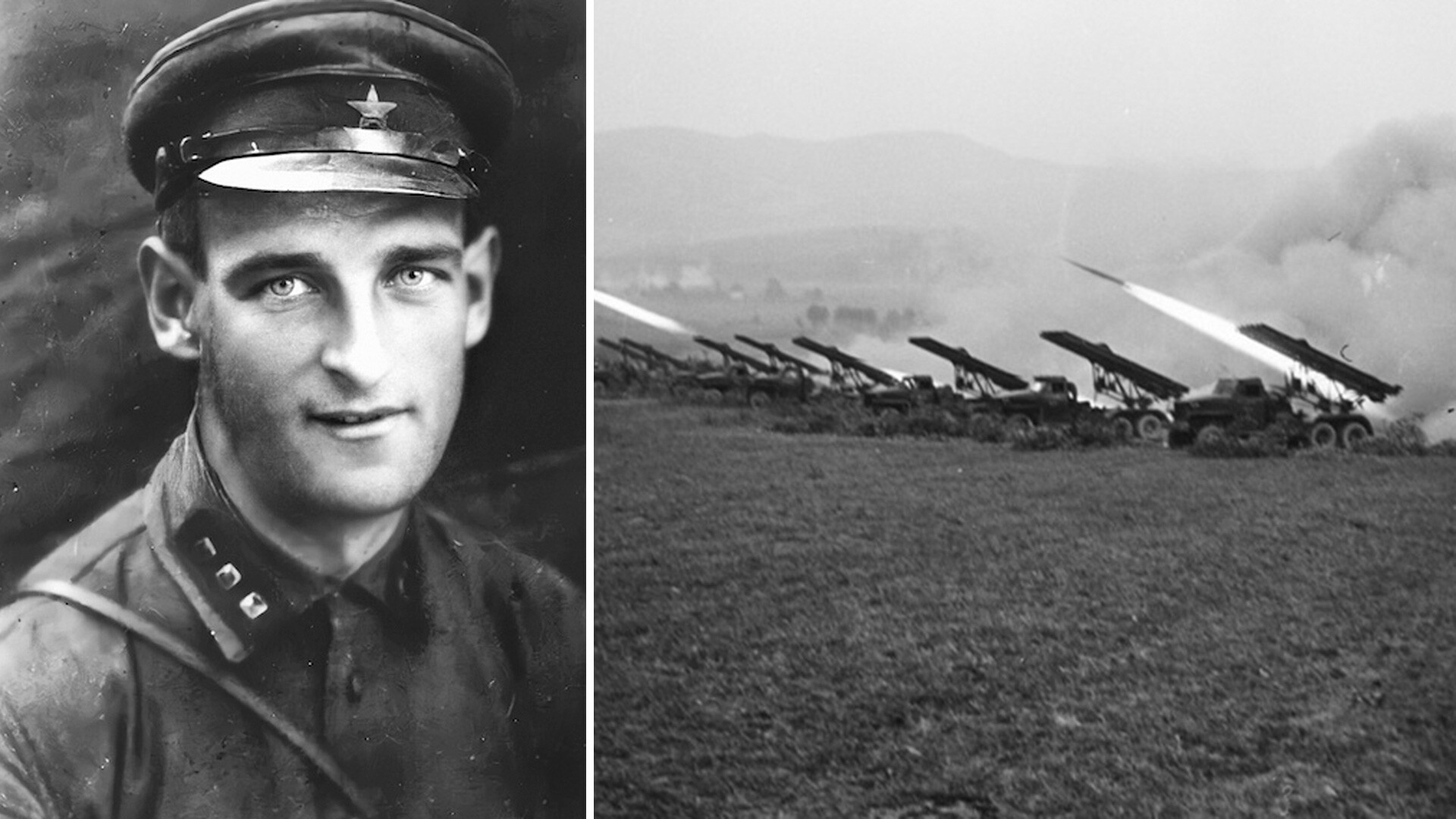
Captain Ivan Flerov / BM-13 Guards rocket mortar.
Archive photo; Arkady Shaikhet"It's a real hell! Fire and red-hot metal falling from the sky on us. From this deadly rain, there is no escape anywhere…" was how German machine gunner Hans Kinschermann described the salvo of the BM-13 Guards rocket mortar, commonly known as the ‘Katyusha’.
This multiple rocket launcher effectively barraged enemy manpower and lightly armored vehicles in open terrain. Wehrmacht soldiers were caught in a "continuous sea of fire", from which it was extremely difficult to get out.
In the Summer of 1941, the first separate experimental battery of rocket artillery under the command of Captain Ivan Flerov arrived at the front, which included seven BM-13 launchers on ZIS-6 trucks. It took part in the battles in eastern Belarus and near Smolensk.
‘Katyushas’ were guarded as the apple of the eye. According to the directive of the Supreme Command Headquarters No. 002490 of October 1, 1941, they were considered "top secret equipment of the Red Army". "These vehicles and ammunition for them should in no case fall into the hands of the enemy," the document said.
In early October 1941 near the village of Bogatyr, Smolensk Region, the battery was surrounded. The soldiers put up fierce resistance to the enemy for a long time, after which, on Flerov's order, they blew up the installations and began to make their way to their troops. From 170 soldiers, only 46 made it out.
The severely wounded commander remained on the battlefield and blew up the lead vehicle before dying. In 1963, he was posthumously awarded the ‘Order of Patriotic War of the First Class’ and, in 1995, he was posthumously awarded the title of ‘Hero of the Russian Federation’.
If using any of Russia Beyond's content, partly or in full, always provide an active hyperlink to the original material.
Subscribe
to our newsletter!
Get the week's best stories straight to your inbox